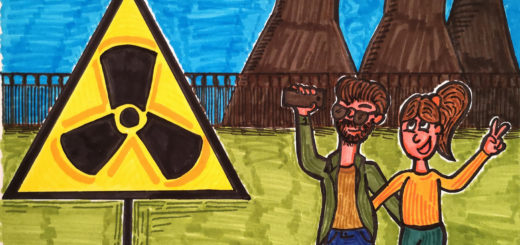Appropriate technology
How would you help a man in Africa who needed to travel to the next village every day for work? Would you give him a car? Would he know how to drive it? How would he maintain it, and what would happen if it were to break down? Do you think there would be many people in his area able to repair it?
“Appropriate Technology” is technology which has been developed carefully to be suitable for the particular area and situation it is used in, i.e. it is sensitive to that area’s environmental, cultural, social and economic concerns. It is no use trying to help developing countries by bombarding them with excessive technologies, which the local people will have no knowledge of, nor the resources to sustain. There are many areas where appropriate technology has been focused on, including sanitation, power, transportation and water supply. Transportation is of particular importance, either for transportation of people or goods. I am going to look at two transportation technologies that have been introduced into developing countries, and also a transportation project that we ourselves (the Strathclyde branch of Engineers Without Borders) have been involved in.
The Hippo Roller 1 is an example of how appropriate technology can bring great benefits to a community. The Hippo roller is essentially a plastic drum which can be pushed along in front of the user with a steel handle. It is currently used in parts of Africa to transport water from far away watering holes back to villages. Traditionally, woman and children would carry the water back using 20 litre barrels that they would place on their head. Not only is this time consuming, but in the long term the heavy load can also damage the carrier’s body frame. The Hippo Roller has a capacity of 90 litres, which means that almost 5 times as much water can be transported, and with far less effort too.
The Free Wheelchair Mission 2 is another good example of appropriate technology. Around 80% of people with disabilities live in developing countries and it is also estimated that 100 million people living in developing countries need a wheelchair, yet cannot afford one. There are a number of reasons for this. Firstly, diseases such as polio are still common in poor countries and lack of medical treatment means that other simple diseases/injuries that could be easily treated are left to worsen. Also, conflict in poor areas can leave people killed or badly injured, and malnutrition and exposure to chemicals can also cause birth defects. The invention of the wheelchair is nothing new, however, the Free Wheelchair Mission recognised the need for more affordable wheelchairs. Using parts already in manufacture and being produced in high volumes, they were able to create a wheelchair with a total cost of $63.94.
Currently, Engineers Without Borders Strathclyde are involved in modeling concepts for a donkey ambulance to be used in Afghanistan 3. The project, set up by HealthProm, involves a custom designed seat that is attached to a donkey. Afghanistan has the highest maternal death rate in the world, with almost one in eight mothers dying from pregnancy related causes. This is mainly due to the number of births performed outside of a medical environment and the lack of medical aftercare for Afghan infants. The donkey saddle will provide necessary transport through the rough, mountainous terrain to the nearest hospital in time for the child to be born under medical supervision. The design incorporates a removable back and water filled tube suspension, focusing on easy access and comfort for the pregnant passenger. Most importantly, the design is also low-cost, sustainable and can be locally produced. It is also appropriate; the alternative is an expensive all terrain motor vehicle which will still struggle and break down often in the Afghan mountains.
These examples show how appropriate technology can be of great benefit to people, when the environmental, cultural, social and economic concerns are considered. The Hippo Roller providing for many people in Africa with a more efficient way of transporting water back to their village, the Free Wheelchair Mission meaning that free wheelchairs can be provided to disabled people in developing countries, and the Donkey Ambulance project which hopes to provide pregnant woman with a means of transport to ultimately increase the chance of their child’s survival.










